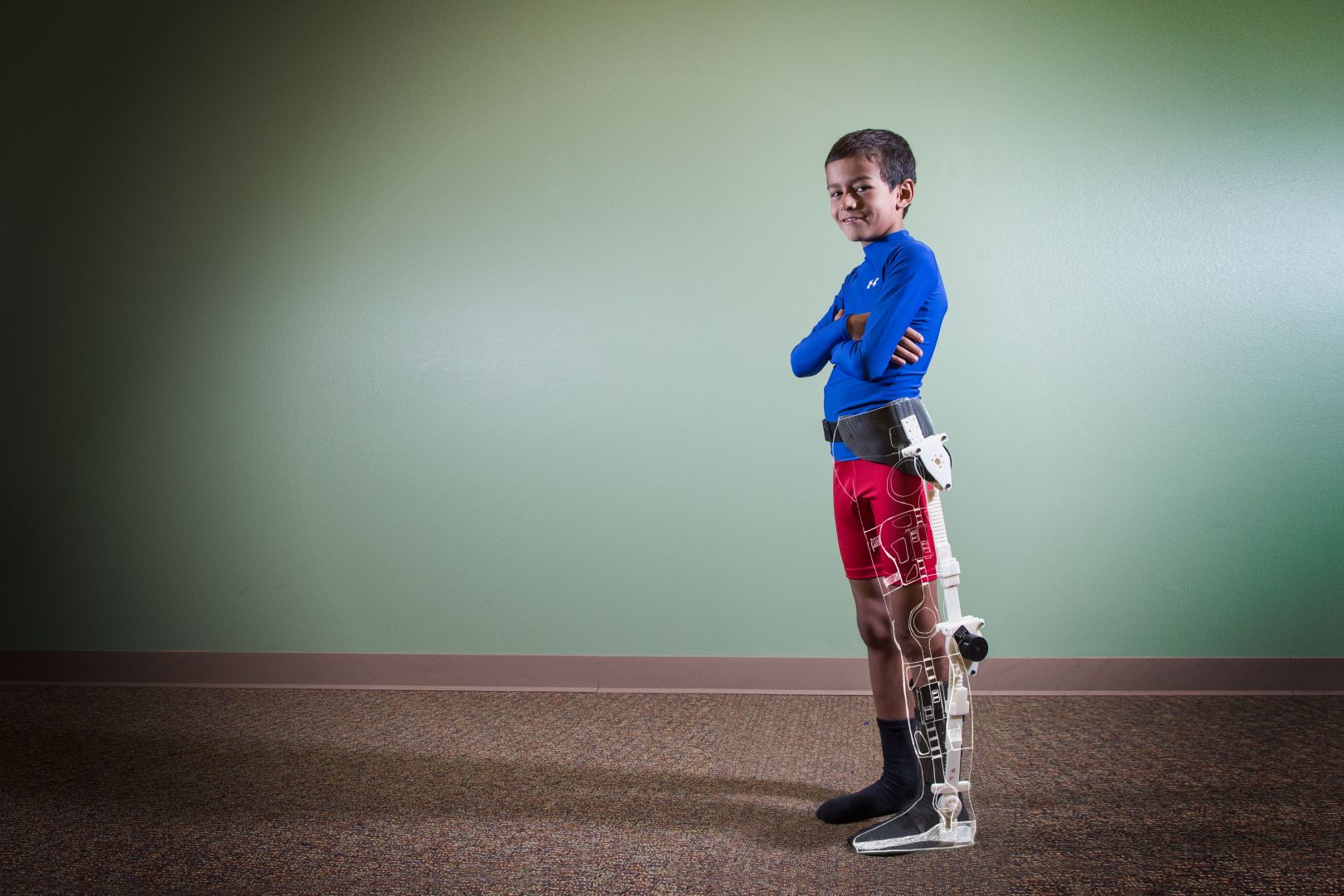
Children who have spinal cord injuries or a mobility disorder may need assistance from prosthetics, wheelchairs, canes and crutches. Due to mobility impairment, children with these disabilities are limited to what their artificial limbs allow them to do.
UH electrical and computer engineering professor Jose Luis Contreras-Vidal has recently received funding to create a pediatric skeleton that increases mobility designed to help children.
“We’re working to develop a pediatric exoskeleton that is designed specifically for children and that will provide the mobility to support their development, curiosity and learning by playing,” Contreras-Vidal said.
Chi A. Eziakonwa, a UH registered nurse and Attendant Care Services Manager, works with students with physical disabilities, including spinal cord injuries, and is familiar with the daily struggle children face when confined to a wheelchair or other assisted mobility device.
“Their life before (their disability) and now is night and day,” said Eziakonwa.
Spinal cord injuries occur from vehicular accidents, motorcycle accidents, sports injuries and even falling. These injuries can affect a person’s life drastically.
“We would assist (students) with all activities of daily living, including getting ready for class, and having a normal college experience,” Eziakonwa said.
Contreras-Vidal is creating a child sized exoskeleton that allows movements specific to those of a child without restrictive mobility. Currently, there are no mobility assistive devices for children.
“Assistive Powered Technology has made great advances in the last five years, however, most developments have been made for the adult population,” said Contreras-Vidal.
He says his team will work to address this gap.
By using a strong but pliable carbon-fiber exoskeleton, the interface will conform to the surface of the skull and move according to electrical brain activity.
This means Vidal’s research will allow children to have increased mobility without the increased risks when it comes to surgery, which Eziakonwa agrees is necessary.
“There are a lot of complications that can happen (with surgery). The spinal cord is so fragile. Recovery varies; each individual is different,” said Eziakonwa. “There’s a risk of infection, there’s a risk of bleeding and there’s a risk of paralysis.”
Contreras-Vidal’s pediatric exoskeleton will aim to eliminate the life-altering risks associated with surgery.
“A noninvasive interface is essential (and) risk-free,” said Contreras-Vidal. “The robot will be a wearable robot.”
Mission Connect, a research project focused on returning lost function and feeling in patients with spinal cord injuries, brain injuries and strokes, has recently funded Contreras-Vidal’s work to create a pediatric exoskeleton.
The project’s grant is worth $100,000. The UH Foundation also awarded Contreras-Vidal with a $50,000 award.
UH has received increased media attention due to Contreras-Vidal’s research and recent grants.
Jeannie Kever, senior media relations specialist, believes that Contreras-Vidal’s recent fundings have benefited the campus’ reputation as a competitive university in research.
“Media attention to Contreras-Vidal’s work and to the groundbreaking research performed by other faculty members of UH is an important way to increase our visibility as a nationally competitive and locally relevant research institution,” said Kever.
Contreras-Vidal and his team are expecting to complete the prototype and start testing next year.
“I hope that in five years, the system is in production and that in 10 years (the pediatric exoskeleton) is widely used.”
news@thedailycougar.com
—
“UH engineer working to create pediatric skeleton for children” was originally posted on The Daily Cougar

